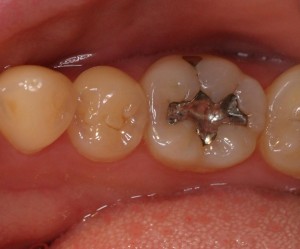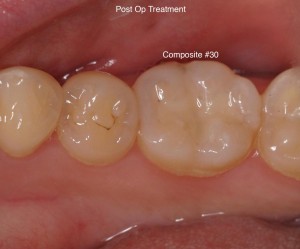Composite Fillings
A composite filling is a tooth colored restoration used to repair a tooth that is affected by decay, cracks, fractures, etc. The decayed or affected portion of the tooth will be removed and then filled with a composite filling.
There are many types of filling materials available, each with their own advantages and disadvantages. You and your dentist can discuss the best options for restoring your teeth. Because composite fillings are tooth colored, they are closely matched to the color of existing teeth and are more aesthetically suited.


As with most dental restorations, composite fillings are not permanent and may someday have to be replaced. Good oral hygiene practices, eating habits, and regular dental visits will aid in the life of your new fillings. Nonetheless, composite fillings are very durable, and will last many years.
After Care
Because bonding material is not as strong as natural tooth enamel, it can chip and may have to be replaced periodically. Bonded areas of the tooth are also prone to stain. For these reasons, bonding requires careful home and professional maintenance. You can help increase the longevity of your dental work by following these tips:
- Avoid acids (such as vinegar, tomatoes, or pineapples) and alcohol which can damage the resins.
- Avoid items that can stain bonding material such as cigarettes, coffee, tea, and berries.
- Do not put excess pressure on resins. Chewing ice, popcorn kernels and hard candy can cause damage.
